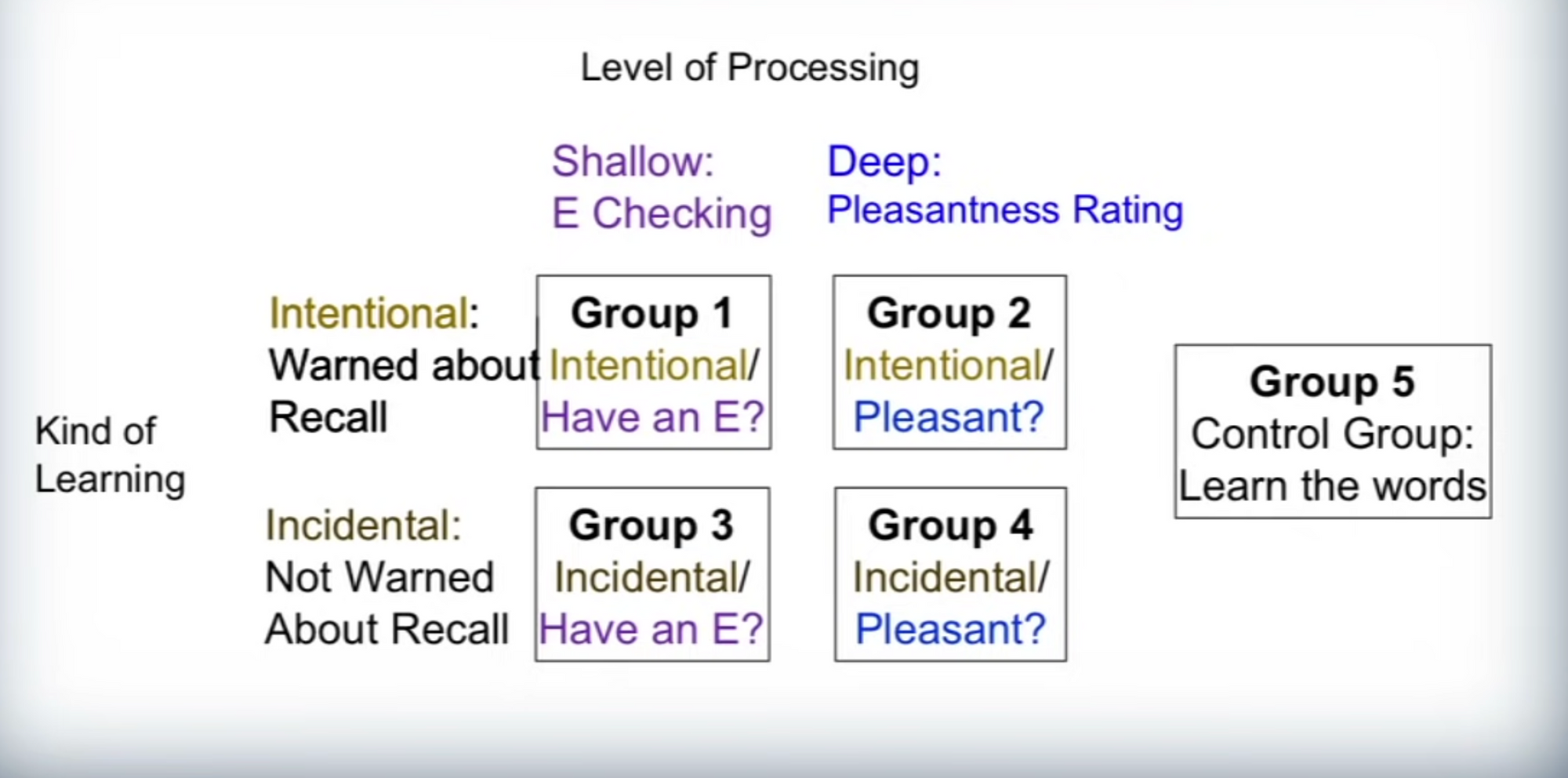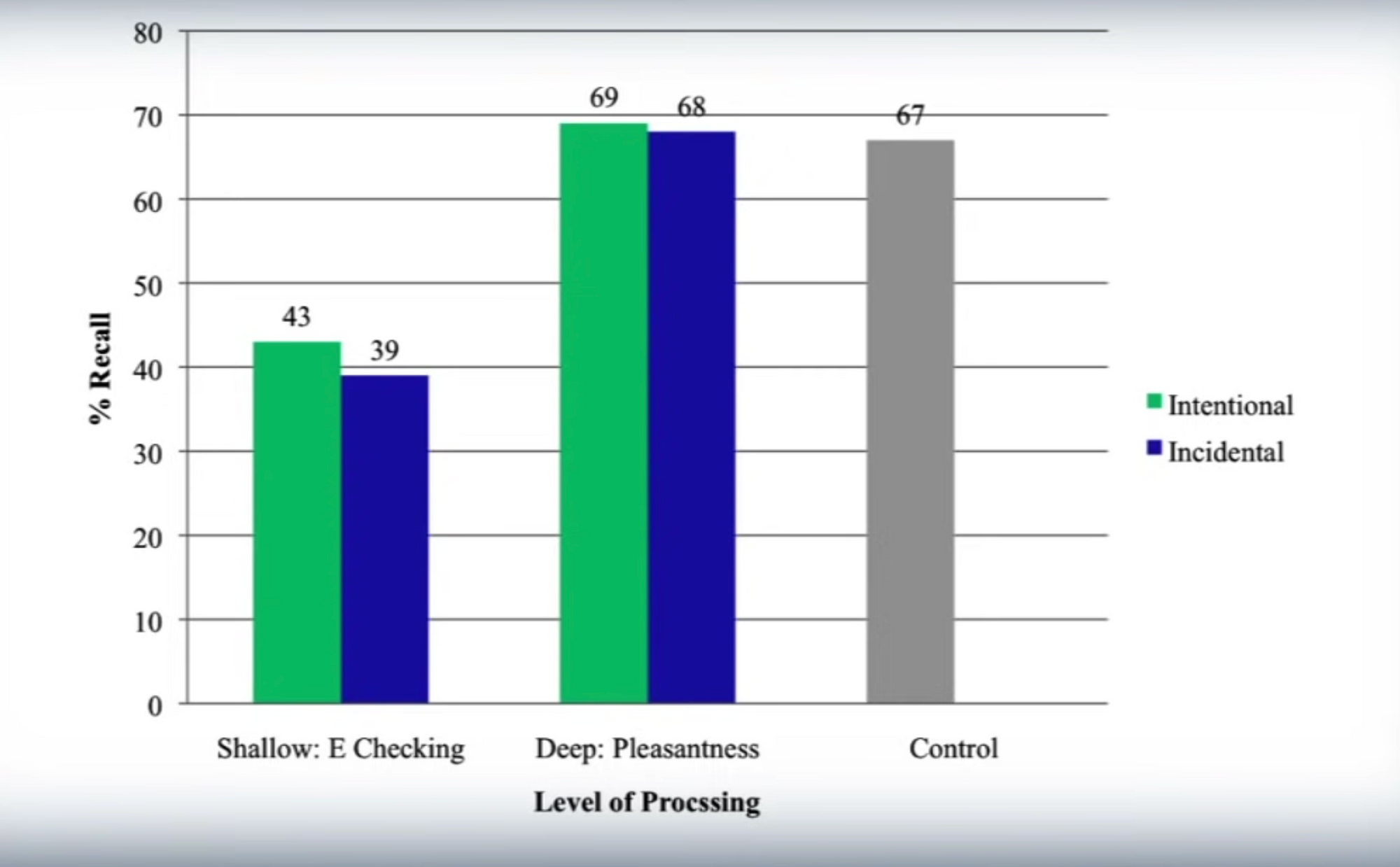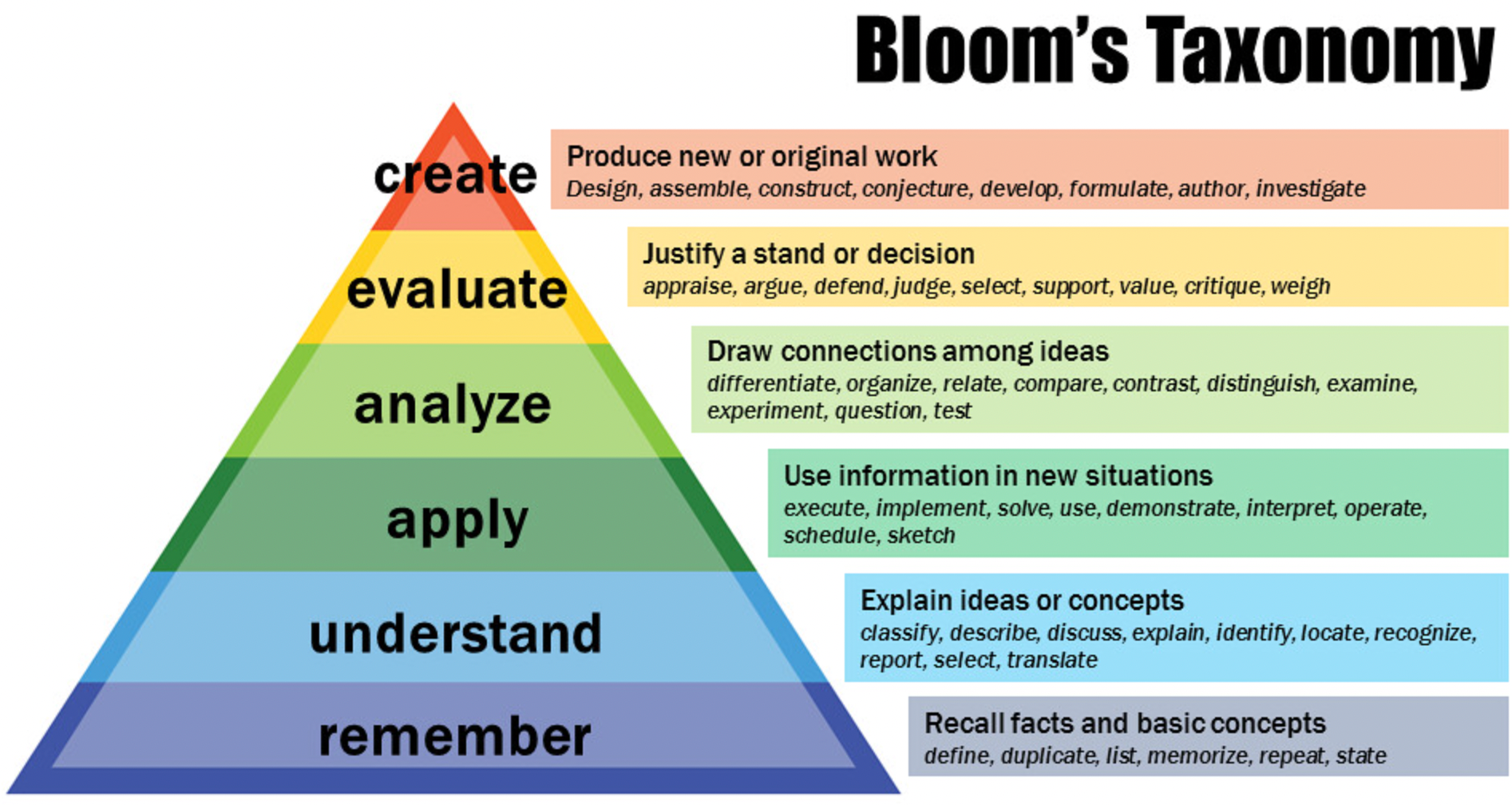How I Learn NEW Content Effectively | Encoding & Active Recall
Today I'm going to show you some practical strategies and examples of how I reduce my cognitive load and use encoding combined with active recall to learn new content.
I'm going to break down the complex topic of encoding into simple and easy to understand practical techniques which you can use right now to help you learn faster and more effectively.
I'm going to dive into some of the evidence and research behind encoding and how we process new information into our long-term memory then I'll touch on how we can encode effectively and then I'll go into five practical encoding strategies which you can use right now.
-4.png)
The Evidence For Encoding
So in terms of learning and memory formation encoding is just the act of moving information from the temporary store in your working memory into the permanent store in your long-term memory. Working memory is where you process anything that you're thinking about right at this moment. However, it has a limited capacity. It can only hold seven or so items of information at a time so you can think of it a bit like a juggler who can only juggle so many things. If you want to remember more than seven things, you're going to need to process that information in a way that makes sure it gets into and stays in long term memory so that you can retrieve it later.
Psychologist say the more deeply we encode information the better we are able to recall it. Now, what do we mean by deeply? Well psychologists Craik & Lockhart, 1972 defined the levels of processing model as focusing on the depth of processing or encoding involved in memory, and predicts the deeper information is encoded, the longer a memory will last.
They split encoding up into three types. The first is structural, the second is phoentic, and the third is semantic. Structural is how something looks, like the letters in a word, phonetic is how it sounds and semantic is what it means. Structural would be shallow. Then we'd go down to semantic, which would be deep. And remember, the more deeply encoded the information, the better we recall it. So, let's look at probability of recall. The shallow level of processing information and encoding would give us a low probability of recalling the information. And a deep level of processing would give us a high probability of recall.

Let's say for example I want to remember the brachial plexus in surgical anatomy. At the structural level, I may at first pass just learn the word brachial plexus. At the phonetic level, you might relate this to words or phrases that sound like the term brachial plexus. And finally, at the semantic level you are actually describing what the brachial plexus actually is.
The basic idea is that if you think about information meaningfully (deep processing), you are much more likely to remember that information than if you think about it at a superficial, meaningless level (shallow processing). And this is true regardless of whether you intend to learn the material or not.
To illustrate this in a bit more detail I want you to imagine you are in a classic psychology experiment by Thomas Hyde and James Jenkins from 1969 and see if you can guess the results.
The basic design of their study is shown here, with 5 different groups of participants.

Each group of participants was presented with a list of 24 words. The instructions the participants were given about what to do with the words varied from group to group. Once all the words were presented, everyone had to try to recall them from memory.
Hyde and Jenkins looked at the impact of two variables on learning. The first one is whether or not you knew you are going have to recall the words after all of them were presented. If you were in one of the two groups in the Intentional condition, you were forewarned that you would have to recall the words after they were all presented. If you were in one of the two groups in the Incidental condition, you weren’t forewarned about the recall test. It’s like taking a surprise pop quiz and any learning that occurred was incidental. The other variable Hyde and Jenkins looked at was how participants rehearsed or encoded words, what became known later as “levels of processing.”
Two groups had to listen to the words and check whether or not it had the letter “e” in the spelling. The other two groups had to rate whether or not they found the word pleasant. Now, why would this make a difference? Well if you are checking for “E”s, then you are focusing on the spelling of the word, which is that structural, shallow level of processing. If you are rating its pleasantness, you are thinking about the meaning of the words related to your own experience. That is called deep level processing.
The list of 24 words was presented one word at a time, and each group carried out its instructions. Afterward, all the participants were asked to recall as many of the 24 words as they could. Who do you think recalled the most words?

Let’s look at the results and see what happened and see what it says about learning. The average percent recall is shown on the y-axis.
Intent to learn had no effect at all. But the level of processing had a huge effect. The deep processing groups recalled a lot more than the shallow processing groups regardless of whether they were intending to learn or not.
Now there are two key points here. First, people who use deep processing learned the material whether they intended to or not. On the other hand, the people who used shallow strategy, even if they wanted to learn, they did not learn.
Second, people who processed words at a deep level, even if they weren’t trying to learn, remembered them just as well as that control group who were doing their best to learn. So, the depth of processing matters and the intention to learn doesn’t. You can have every intention to learn, but if you use a shallow strategy, you won’t learn.
Shallow levels involve studying meaningless, superficial properties of what you are trying to learn, like mindless re-reading or memorization. The deepest levels of processing involve thinking about material meaningfully, interpreting the information and relating it to your prior knowledge or experience, or creating a mental image of the information. Deeper processing leads to better recall.
How Can We Encode Effectively to Learn Efficiently?
So if deep processing is the key to effective study, how do we accomplish this while we’re studying? Well the other helpful tool here is Bloom's Taxonomy which I have a full video on which we'll put up a link to. To encode effectively we want to move from the lower order methods of learning like using memorization and just recalling facts from flashcards and actually move up to higher order techniques that allow us to make learning more meaningful and connect things to what we already know using the information to solve problems, organize information and essentially understand a topic well enough to put it into our own words similar to the Feynman method. where you can explain a complex topic in simple terms that a child could understand.

When I'm learning I have this nagging feeling inside of me to really understand what's going on. It's all about coherence within my mind. If there aren't any unexplained questions that I have left on the topic, then I'll consider it understood.
I'll often ask myself can I explain this concept in simple terms and also do I have any unanswered questions in my mind? So kind of an external ability to explain something and this internal coherence of do I understand the next step related to the topic. So for example if I'm learning the brachial plexus I'm thinking can I explain this to a child in simple terms or can I draw it which I was asked to do for exams but also do I know what the nerve branches supply? Do I know the clinical signs if they're damaged at different points?
In educational psychology understanding, deep encoding and higher-order learning techniques all boil down to three key principles: elaboration, distinctiveness and personal experience.
Elaboration means making meaningful associations between the concept you are studying and related concepts. The associations can be among concepts you are studying or with your prior knowledge. The more meaningful associations you can make, the better you will learn.
Distinctiveness means that you make clear contrasts between the concept you are studying and other concepts. You need to understand the key differences among related concepts.
Say you’re learning about the ventricles of the heart in anatomy. You elaborate the ventricles by relating them together as parts of the heart. They both pump blood. You also emphasize the distinctiveness between the two by focusing on the key differences like where they receive blood from and where they pump it to and how one carries oxygenated and the other deoxygenated blood which you can then relate to their wall thickness and in turn to their valves and concepts outside of anatomy like physiology and human circulation.
Finally, you relate it to your own personal experience. Sticking with this example maybe you saw a patient who needed a valve replacement or maybe you saw a cartoon about how the heart pumped blood as a child.
-4.png)
Encoding Strategies For Learning Anything
So these are the basic principles of deep processing. Successful encoding techniques usually involve tying in the new information into previously known information and effective learning strategies take advantage of some or all of these principles. So let's look at some learning strategies that help us to encode information starting off with one that probably, isn't actually that great.
Mnemonic Devices and Memorization
The first encoding technique I'm going to touch on involves mnemonic devices, and while these are memory aids that help you link what you're trying to learn into previously existing easier-to-remember information they're actually only really helpful if you're learning lists of information and while it's important to touch on them they are superficial learning tools rather than helping us to encode deeply. Mnemonic devices include images, acronyms, rhymes and pegwords and the method of loci also know as memory palaces.
Imagery is simply creating a vivid mental picture of whatever it is you're trying to remember. When I'm learning something I'll actively seek out images and tables and for subjects like medicine and biology I'll make sure I start with concepts like anatomy first to help build a base for relating everything else to. For example it's hard to start learning about the pathophysiology of blood clots if you don't know the heart and major blood vessels of the circulatory system.
Pegword systems and the method of loci are used by memory masters and both of these really just involve making anchors and linking your new information to those anchors. The anchors might be verbal cues such as for pegwords rhyming an ordered list so one is gun, two is shoe, three is tree and so on and then linking the new content you are learning to those words and images. So if you're remembering a list maybe the gun is shooting the first item, the next item is in the shoe, the third is in a tree and so on. The method of loci uses visual and personal existing items such as a room you are familiar with and then you link the objects you know in the room with new things you are learning.
The same goes for acronyms and rhymes. I'll use these frequently if trying to recall facts like the causes of pancreatitis or the branches of the facial nerve and I'll even make up my own acronyms and rhymes to do this but the problem with all these methods is that although they are relating facts to existing information we're probably not really understanding or moving to higher-order thinking. We're still at the bottom of Bloom's Taxonomy and in the superficial structural and phonetic level of the processing model and this is why most people who use flashcards to learn things on platforms like Quizlet or Anki probably aren't actually learning that effectively.
Chunking and Organizing
A better way to relate new information to existing is called "chunking." And by chunking, we actually group the information that we're getting into meaningful units or chunks to help better organize. So this ties it into meaningful categories that we already know.
Now if you're learning something from a course or textbook some of this may have been done for you already by teachers and authors. For example if I'm learning Biology or Math new concepts are introduced in chapters or sections in the source material. And that's why I'll usually skim through a chapter or look at learning outcomes to chunk things together and build context.
And what's cool is you can chunk pretty much anything in a way that makes sense to you. For example I might group things I'm learning by areas of the body or if I'm trying to remember what to pick up from the shops I might group things by meal or type of product.
As long as the categories make sense to you and those chunks will be retrievable, then that's great. In terms of how to actually chunk concepts effectively I'll usually start by looking at the big picture of what I'm trying to learn and then focus on getting a basic understanding of what that is and where new content fits into my existing knowledge. This is where the skim reading comes in or looking at learning outcomes or key summaries. There is both a top-down chunking process that occurs where you focus on the big picture and where your learning fits in and then there is also bottom-up chunking where practice and active recall help you to build on each chunk and make things relevant as you encounter questions and problems that naturally link concepts together. For example if I'm learning about gastrointestinal pathology I will group diseases by which organs and structure they effect as a top-down approach but will also then go bottom up when linking things like gastric ulcers to the physiology of gastric acid secretion and how the disease is actually caused so as well as understanding the symptoms and when something happens I'm also learning how something happens and the context behind it. In this case how peptic ulcers cause pain and reflux due to erosion of the protective mucosa by things like anti-inflammatories and H.Pylori infections.
Question Generation
Next up is question generation. After I have read a chapter or reviewed a section of notes or part of a video, I'll typically generate some questions about the material and I'll try to make the questions as meaningful as possible and as higher order as possible. What does this look like?
Well questions about facts are OK, but questions that make you compare and contrast, analyze, make connections or generate examples are even better. If you make the questions personal that's even better. Just generating the questions will help your depth of processing. Reviewing the material to answer them is even better. At first, generating questions will be a bit awkward, but like anything, with practice will become easier and more automatic.
For me I'll come to the end of a paragraph, diagram, table or chapter and I'll simply write down something like "Explain the concept of whatever it is I'm learning" or in the case of medicine "draw the brachial plexus" or even better what does a lesion of the C5 nerve root cause. These help me to test my understanding and also form part of how I take notes as I learn new information.
I'll stick to what I mentioned earlier - can I explain this to a child as in the Feynman technique and what other questions does this topic or item bring up in my mind. For the latter I'll start to pull on the string of anything I'm not sure about and add these as questions.
Appropriate Retrieval
Once I've chunked and ordered what I'm learning and I've generated questions I'll then focus down on application of knowledge using active recall. There are a few things I'll do here. The first is I'll seek out worked examples within the source materials that I'm learning from. This might be questions at the end of a chapter or it might be some call out boxes walking through a math equation. These help to bring context to how problems are solved and how concepts are applied. The reason I use the word appropriate is that it's important that the recall questions you are using are at the correct difficulty level and in the correct format. FOr this reason I'll jump into past papers and question banks early or if I'm learning a language or instrument I'll start practising.
As I go through the first pass I'm not worried about whether I'm getting things correct or incorrect so much. I more highlighting in my mind what areas I have no clue about and which I find the most challenging. I can then make a conscious effort to focus on these areas. After you have practiced recalling the test or recalling the information, you can check yourself against your textbook and your notes. This will help you identify weaknesses in your understanding of the material and it allows you to further connect concepts and I'll try and use video or audio here too to help reduce my cognitive load rather than just going back to areas of my existing notes.
Teaching Others
Teaching others involves a great deal of deep processing, and it makes it more likely that you'll be able to retain that information. Even preparing to teach has been shown to make you self-reference concepts more deeply meaning that you imagine that you are learning this material in order to teach it to someone else.
When that happens, you're actually able to remember it a lot better, because you're putting a lot more effort into organizing and understanding the information you're taking in. When I learn, especially for spoken exams like surgical OSCEs and viva-style tests I'll often study in a group. This first provides accountability and also helps to ease my cognitive load as we'll all be contributing to help each other understand topics in simple terms. The way that I like to use group teaching is that each person in the group picks a topic to teach others and then they explain it in as simple terms as possible and the other group members then ask questions if they're not sure about something. This helps the person teaching to appreciate if the way they have explained it is simple enough and also allows for friendly quizzing and active recall sessions. The discussion will naturally progress to learning around the topic to build understanding and the process of creating the teaching materials is the top of Bloom's Taxonomy as the highest order.
Diffuse Thinking and Spacing
The last technique I want to tell you about is a little bit different than the other ones and is all about taking breaks. Remember encoding and cognitive load are all about your working memory which can only hold seven or so items at a time so trying to cram too much in or working when sleep deprived is going to be counter intuitive. Spacing means you should spread out your study sessions over time rather than cramming them all into one massive study session. This is kind of unintuitive, because a lot of people think that if you have five hours to study, then you should do it all at once right before the test so that it's fresh in your mind to take the test.
But what researchers have found is that if you actually space out your study sessions– so if you have five one-hour study sessions across five days-- you'll actually remember that information long-term a lot better.
And this is unintuitive, because if you're studying something for an hour, and then you start your second hour, all that information feels really fluent, and you're like, yeah, I got this. But if you study for an hour, wait a day, and then you start your second hour, it feels a lot harder, and you realize that you don't know it as well as you thought you did. So one reason spacing is thought to be helpful is because it lets you know what you don't know while you're studying, and it also introduces a form of self-testing so you're able to prepare yourself better for that later test. Similarly diffuse thinking is about creative problem solving. If you find yourself getting stuck or unable to comprehend something it's likely that you're cognitively overloaded. Diffuse Thinking is what happens when your mind relaxes, providing space for daydreaming and wandering thoughts. That's something that many people miss or undervalue — it's the fact that even when your conscious mind stops concentrating on something, your brain will continue to process, ponder and think. And this fits in nicely with spacing as thinks that trigger diffuse thinking are breaks like mindfulness, walking in nature, sleep (which also consolidates memory) and anything that really relaxes you.
Effective encoding techniques do involve a little extra effort, but hopefully now in your learning, you can be prepared to process the information in a productive way so that you can study efficiently and effectively.
-4.png)


